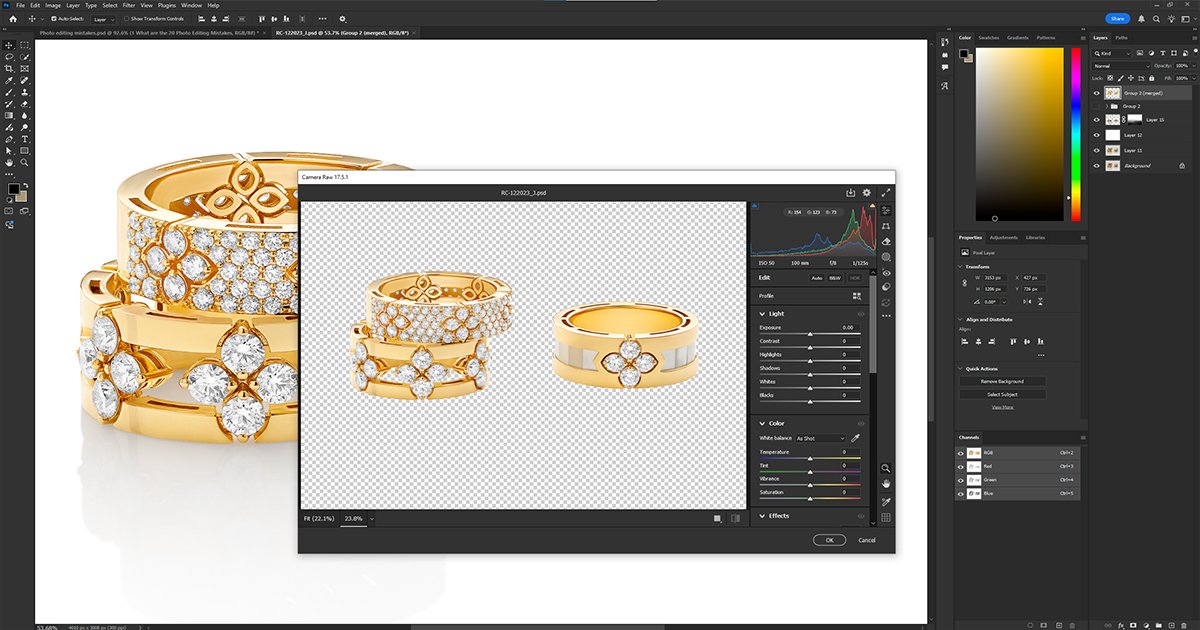
Why Texture Matters in Product Photography
In eCommerce, your product photo is your first salesperson. But what happens when you over-edit and erase the natural texture?
The product starts to look fake, plastic, and untrustworthy — leading to fewer sales and poor brand credibility.
Professional eCommerce photo editing services know that preserving texture is the secret to realism. Whether it’s fabric fibers, metal polish, or leather grains, texture gives depth and life to your images.
What Happens When You Ignore Natural Texture?
When editors smooth out or blur textures too much, they remove the tactile feeling that customers rely on to judge quality.
Results of ignoring texture:
The product looks flat and artificial.
Customers can’t imagine the material’s feel.
Online shoppers doubt authenticity.
Reduced engagement and sales conversions.
Maintaining texture bridges the gap between digital display and real-world feel — a critical element for successful online selling.
Understanding Natural Texture in Photography
Texture captures the surface quality of a product — whether glossy, matte, rough, or soft. It adds dimension, realism, and credibility.
For example:
A leather bag should show fine creases.
A diamond ring should reflect subtle facets.
A cotton shirt should reveal soft fibers.
In professional product photo retouching, texture ensures that customers “feel” the product through their screens.
The Balance Between Clean Edits and Realism
Many brands make the mistake of over-polishing their photos. They aim for perfection but end up losing realism.
Over-cleaned images = Unrealistic visuals.
Balanced editing = Professional yet believable photos.
Professional eCommerce photo editing services maintain this balance — removing distractions but preserving texture integrity.
Why Many Editors Overlook Texture
Texture loss usually happens due to:
Overuse of blur or smoothing filters
Aggressive noise reduction
Automated AI retouching without human oversight
Poor lighting during shooting
The goal of product photo retouching should always be enhancement, not transformation.
The Role of Product Photo Retouching
Professional retouchers know how to refine images without losing texture.
Their goal: make products look polished yet real.
They:
Remove dust and scratches
Balance lighting
Enhance details
Preserve natural surface patterns
This precision requires both artistic and technical expertise — something only skilled photo editing services deliver consistently.
1. Identifying Essential Textures in Product Images
Not all textures are equally important. Editors must decide what adds value to the image.
Examples of essential textures:
Fabric weave in apparel
Wood grain in furniture
Metal reflection in jewelry
Surface pattern on leather goods
Recognizing these key textures helps maintain authenticity in edited images.
2. Techniques to Preserve Texture in Editing
Here’s how professionals retain texture during product photo retouching:
Use frequency separation to edit tone and texture separately.
Apply high-pass filters to enhance detail subtly.
Adjust clarity and sharpening locally instead of globally.
Use dodge and burn to define depth and highlights.
These techniques enhance the product’s natural look without making it appear artificial.
3. Avoiding Over-Smoothing and Excessive Filters
Over-smoothing removes important details like fabric threads or gemstone cuts.
Similarly, applying heavy filters reduces contrast and depth.
How to avoid this:
Use manual retouching instead of auto tools.
Zoom in to edit fine areas carefully.
Always compare before-and-after versions to maintain realism.
Professional editors ensure your product images look flawless but not fake.
4. Maintaining Consistency Across Product Catalogs
In eCommerce, consistency builds brand reliability. If one image looks heavily edited while another looks real, customers lose trust.
That’s why top eCommerce photo editing services maintain consistent texture across all product listings — ensuring every image aligns with your brand identity.
Benefits of eCommerce Photo Editing Services
Outsourcing to experts provides several benefits:
Texture-preserving retouching
Accurate color correction
Time efficiency for bulk images
Cost savings
Professional presentation for online platforms
When handled by specialists, your photos maintain clarity, realism, and appeal — the perfect combination for high-converting eCommerce visuals.
Before vs. After: Texture-Preserving Retouching Example
| Aspect | Before (Ignoring Texture) | After (Professional Retouching) |
|---|---|---|
| Surface Detail | Blurry, flat, lifeless | Clear, realistic, detailed |
| Material Feel | Hard to recognize | Visibly tactile |
| Lighting | Uneven | Balanced and natural |
| Appeal | Artificial and unconvincing | Authentic and attractive |
Texture brings products to life — a must-have for modern online retailers.
How Ignoring Texture Impacts Conversions
Shoppers rely on visuals to make decisions. When textures are missing, they subconsciously question the product’s authenticity and quality.
Ignoring texture leads to:
Lower engagement time
Reduced trust
Higher bounce rates
Fewer purchases
In contrast, realistic product images build confidence and drive sales.
FAQs about Product Texture and Retouching
1. What causes texture loss during photo editing?
Overuse of blur filters, auto-smoothing, or AI retouching without manual refinement.
2. How do eCommerce photo editing services maintain texture?
By using manual retouching, frequency separation, and balanced sharpening techniques.
3. Can texture be restored after it’s lost?
Partially — professional editors can recreate texture using advanced tools and blending.
4. Why is texture important for product photos?
It communicates quality and realism, helping buyers trust the visual representation.
5. What’s the difference between cleaning and over-editing?
Cleaning removes distractions; over-editing removes character. The key is moderation.
6. Should I outsource my product photo retouching?
Yes. Professionals preserve texture, consistency, and color accuracy better than DIY edits.
Conclusion: Keep It Real with Professional Product Photo Retouching
Ignoring natural texture can strip your product photos of realism, credibility, and sales potential. Customers want to see — and almost feel — your products online.
That’s why partnering with expert eCommerce photo editing services like Color Clipping ensures each image remains sharp, authentic, and conversion-ready.

